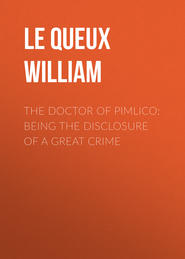По всем вопросам обращайтесь на: info@litportal.ru
(©) 2003-2024.
✖
The Great God Gold
Настройки чтения
Размер шрифта
Высота строк
Поля
“It will be interesting to trace the history of the temple from that date down to the siege of Jerusalem by Nebuchadnezzar,” remarked Frank.
“That occurred about three hundred years after Solomon’s death – at least according to our latest chronologers,” replied the Professor, “and it is in tracing that history that we have many of the points before us negatived most decisively. Let me instance one or two of them.”
“Yes, do, dad,” cried Gwen, greatly interested. “I’m quite excited, over the mysterious affair.”
“Then listen, child,” the old man said. “But, first go and get a Bible from the study.”
And the girl rose to do her father’s bidding.
Chapter Ten
Fact or Fiction
“I may perhaps with advantage give you very roughly some historical facts which tend to negative Diamond’s theory,” the Professor said, turning to Farquhar while Gwen was absent.
“That is what I’m most desirous of hearing,” replied the young man. “I can claim no special knowledge like yourself. Indeed, no man in England is more capable of expressing an opinion than you are.”
The Professor passed his hand through his scanty grey hair and smiled. He saw that his wide knowledge impressed this young man whose only thought was a “sensation” in one or other of the Gavin group of publications.
Then, when Gwen had re-entered the room with a Bible in her hand, he said in that slow, deliberate habit of his, the habit of the scholar and deep thinker:
“The theory of this Doctor Diamond is that the treasures of Solomon’s temple were hidden by the priests prior to the taking of Jerusalem by Nebuchadnezzar. Well, that is a bold but quite unsubstantiated assertion. As early after Solomon as the reign of Jeroboam the First, King of Judah, the golden calves, the symbols of the Heliopolitan deity, were set up in the two extremities of the kingdom, and the temple was put to sacrilegious usages. These sins were continued by his successors, until in the reign of Asa, the third King of Judah, the impure orgies of Ashtoreth were suppressed, for ‘having his heart perfect with Jehovah all his days’ the king repaired Shishak’s plunder – the first plunder of the temple, mark you – with ‘rich offerings of gold and of silver.’ Asa made war against the Ethiopians, and on returning to Jerusalem the prophet Azariah, son of Oded, met him and exhorted him and his subjects to be strong heart in hand in seeking God. He gave an affecting description of the former state of Israel: ‘For a long season Israel hath been (or was) without the true God, and without a teaching’ priest, and without law. (2 Chronicles, xv, 3.) His words roused the hearers to a new and more thorough reformation. The idols were removed from all the cities of Judah and Benjamin, and those which had been won from Ephraim. The altar of burnt-offering, which had been polluted by Jeroboam, was renewed, and in the third month of the fifteenth year (B.C. 940) Asa called a great convocation at Jerusalem. Jehoshaphat followed his father’s piety, but the darkest night of Israel’s spiritual declension came with the accession of Ahab, seventh King of Israel, and husband of Jezebel. The service of Baal was established throughout Israel, a grove was made for the orgies of Ashtoreth, and by Jezebel’s orders the prophets of Jehovah were put to death, all except one hundred who were hidden in a cave by Obadiah, the governor of Ahab’s house.”
“But was the temple already plundered?” asked Gwen, seated with her chin resting upon her hand, listening intently.
“We know that it was plundered seriously by Shishak, King of Egypt, who carried off many of its greatest treasures, including the celebrated golden shields of Solomon’s house, which Rehoboam replaced by brass to keep up the display,” was the Professor’s prompt reply. “Recent discoveries at Karnak tell the whole story of the conquest from the Egyptian point of view. The kingdom of Judah, it seems, became for a long time tributary to Shishak, and upon the walls of the great temple at Karnak there are the sculptured representation of the siege and the hieroglyphics ‘Fuda Melchi’ – meaning ‘The Kingdom of Judah.’ That was, you will bear in mind, the first spoliation.”
“Were there others?” asked Frank. “I mean others that are authenticated by recent discoveries?”
“Yes, Jehoram reigned in Jerusalem from B.C. 895-892, and after his marriage with Athaliah, daughter of Ahab, the temple was again despoiled, and the daughters of Judah were once more prostituted to the rites of Ashtoreth,” replied Professor Griffin. “Joash, in B.C. 884, repaired the fabric of the temple by public subscription, for he was the inventor of the modern money-box – and there were enough funds left over, we are told, to purchase vessels for the sanctuary. (2 Kings, xii, 4-6; 2 Chronicles, xxiv, 4-14.) This, however, did not last long, for in the reign of Amaziah, ninth King of Judah, Jehoash, King of Israel, defeated him in B.C. 826, took him prisoner and, entering Jerusalem again, reached the temple and conveyed all its treasures to Samaria.
“In the reigns of Jeroboam the Second, Shallam, Menaham and Pekehiah, other vessels and treasures were provided for the temple. Jonathan built the high gate, but his successor, Ahaz, after plunging into all the idolatries of the surrounding nations, making molten images for Baal and sacrificing his children to Moloch in the valley of Hinnom, found himself, according to our best chronologer, Ussher, involved in war. He was therefore compelled to apply for help to Tiglath-pileser, the ‘Tiger-Lord of Asshur,’ King of Assyria, against Syria and Israel, and declaring himself his vassal, sent him all the treasures then left in the temple. Ahaz, we learn from 2 Kings, xvi, 10-18, profaned the temple by dismounting the brazen altar and replacing it by another. Likewise the ‘Great Sea of Solomon,’ too large to be removed at previous despoliations, was dismounted from its supporting oxen, and the lavers from their bases, which were also sent to the King of Assyria, together with the coverings which had been built for the King’s entry to the house, and for the shelter of the worshippers on the Sabbath. The golden vessels of the House of God were cut in pieces and sent with the rest, and the sanctuary itself was shut up. Hezekiah, who came after him in B.C. 726, reopened and restored the Holy Place, though it was now devoid of most of its treasures.
“To trace the history of the Temple through the days of Hoshea, son of Elah, Manasseh and Amon is perhaps unnecessary. Under Josiah, whose reign marks the last dying glory of the earthly kingdom of David, idolatry was put away, the Temple was renovated and the Ark of the Covenant which had been hidden restored to its place. (2 Chronicles, xxxiv, 3-13; xxxv, 3.) During these repairs the high priest Hilkiah found the sacred copy of the book of the law and delivered it to Shaphan, the scribe, who read it before the king. It was afterwards publicly read, and incited a new zeal among the people, and once again was the sanctuary filled with gold and silver vessels. Therefore you will see that by this period there could not have been any of the actual treasures placed by Solomon remaining in the Temple.”
“The Ark of the Covenant was still there,” remarked young Farquhar.
“That is not at all certain,” was the old man’s reply. “Many of the events chronicled in the Old Testament are corroborated by the inscriptions found by Flinders Petrie in Egypt and by Layard at Nineveh. Others are negatived, and our chronology rendered uncertain. Certain it is, however,” he went on, “that in the fourth year of the reign of Jehoiakim, eighteenth King of Judah (B.C. 608-597), Nebuchadnezzar arose, and a few years later advanced to Jerusalem, which he took after a brief siege. The vessels of the sanctuary were carried off to Babylon, where they were dedicated in the temple of Belus. If you turn to 2 Kings, xxiv, 13, you will there read: ‘And he carried out thence all the treasures of the house of the Lord, and the treasures of the king’s house, and cut in pieces all the vessels of gold which Solomon, King of Israel had made in the temple of the Lord, as the Lord had said.’”
“Surely it was Ezekiel who went as one of the prisoners of Nebuchadnezzar to Babylon,” remarked Gwen.
“Yes,” replied her father, “on the second occasion when the Babylonian king attacked the city. But,” he added, “in the reference I have just given you, you will note that the vessels are described as ‘those that Solomon had made.’ Either therefore they had been too massive for removal on the many previous occasions when the temple was plundered or they had been made to replace the ancient originals. The latter is my own theory. Now, as I dare say you will recollect, in B.C. 586, on the tenth day of the fifth month, Ab, Nebuchadnezzar again advanced against the rebellious city of Jerusalem and destroyed it. The two great pillars of the temple porch, Jachin and Boaz, and Solomon’s brazen sea with the twelve bulls supporting it, were broken in pieces and their brass transported to Babylon, together with a great number of captives. And on the third day of the catastrophe, in the nineteenth year of Nebuchadnezzar, the temple and the city were committed to the flames with the palaces of the king and princes, and all the chief houses of Jerusalem, and their walls levelled to the ground.”
“That occurred about three hundred years after Solomon’s death – at least according to our latest chronologers,” replied the Professor, “and it is in tracing that history that we have many of the points before us negatived most decisively. Let me instance one or two of them.”
“Yes, do, dad,” cried Gwen, greatly interested. “I’m quite excited, over the mysterious affair.”
“Then listen, child,” the old man said. “But, first go and get a Bible from the study.”
And the girl rose to do her father’s bidding.
Chapter Ten
Fact or Fiction
“I may perhaps with advantage give you very roughly some historical facts which tend to negative Diamond’s theory,” the Professor said, turning to Farquhar while Gwen was absent.
“That is what I’m most desirous of hearing,” replied the young man. “I can claim no special knowledge like yourself. Indeed, no man in England is more capable of expressing an opinion than you are.”
The Professor passed his hand through his scanty grey hair and smiled. He saw that his wide knowledge impressed this young man whose only thought was a “sensation” in one or other of the Gavin group of publications.
Then, when Gwen had re-entered the room with a Bible in her hand, he said in that slow, deliberate habit of his, the habit of the scholar and deep thinker:
“The theory of this Doctor Diamond is that the treasures of Solomon’s temple were hidden by the priests prior to the taking of Jerusalem by Nebuchadnezzar. Well, that is a bold but quite unsubstantiated assertion. As early after Solomon as the reign of Jeroboam the First, King of Judah, the golden calves, the symbols of the Heliopolitan deity, were set up in the two extremities of the kingdom, and the temple was put to sacrilegious usages. These sins were continued by his successors, until in the reign of Asa, the third King of Judah, the impure orgies of Ashtoreth were suppressed, for ‘having his heart perfect with Jehovah all his days’ the king repaired Shishak’s plunder – the first plunder of the temple, mark you – with ‘rich offerings of gold and of silver.’ Asa made war against the Ethiopians, and on returning to Jerusalem the prophet Azariah, son of Oded, met him and exhorted him and his subjects to be strong heart in hand in seeking God. He gave an affecting description of the former state of Israel: ‘For a long season Israel hath been (or was) without the true God, and without a teaching’ priest, and without law. (2 Chronicles, xv, 3.) His words roused the hearers to a new and more thorough reformation. The idols were removed from all the cities of Judah and Benjamin, and those which had been won from Ephraim. The altar of burnt-offering, which had been polluted by Jeroboam, was renewed, and in the third month of the fifteenth year (B.C. 940) Asa called a great convocation at Jerusalem. Jehoshaphat followed his father’s piety, but the darkest night of Israel’s spiritual declension came with the accession of Ahab, seventh King of Israel, and husband of Jezebel. The service of Baal was established throughout Israel, a grove was made for the orgies of Ashtoreth, and by Jezebel’s orders the prophets of Jehovah were put to death, all except one hundred who were hidden in a cave by Obadiah, the governor of Ahab’s house.”
“But was the temple already plundered?” asked Gwen, seated with her chin resting upon her hand, listening intently.
“We know that it was plundered seriously by Shishak, King of Egypt, who carried off many of its greatest treasures, including the celebrated golden shields of Solomon’s house, which Rehoboam replaced by brass to keep up the display,” was the Professor’s prompt reply. “Recent discoveries at Karnak tell the whole story of the conquest from the Egyptian point of view. The kingdom of Judah, it seems, became for a long time tributary to Shishak, and upon the walls of the great temple at Karnak there are the sculptured representation of the siege and the hieroglyphics ‘Fuda Melchi’ – meaning ‘The Kingdom of Judah.’ That was, you will bear in mind, the first spoliation.”
“Were there others?” asked Frank. “I mean others that are authenticated by recent discoveries?”
“Yes, Jehoram reigned in Jerusalem from B.C. 895-892, and after his marriage with Athaliah, daughter of Ahab, the temple was again despoiled, and the daughters of Judah were once more prostituted to the rites of Ashtoreth,” replied Professor Griffin. “Joash, in B.C. 884, repaired the fabric of the temple by public subscription, for he was the inventor of the modern money-box – and there were enough funds left over, we are told, to purchase vessels for the sanctuary. (2 Kings, xii, 4-6; 2 Chronicles, xxiv, 4-14.) This, however, did not last long, for in the reign of Amaziah, ninth King of Judah, Jehoash, King of Israel, defeated him in B.C. 826, took him prisoner and, entering Jerusalem again, reached the temple and conveyed all its treasures to Samaria.
“In the reigns of Jeroboam the Second, Shallam, Menaham and Pekehiah, other vessels and treasures were provided for the temple. Jonathan built the high gate, but his successor, Ahaz, after plunging into all the idolatries of the surrounding nations, making molten images for Baal and sacrificing his children to Moloch in the valley of Hinnom, found himself, according to our best chronologer, Ussher, involved in war. He was therefore compelled to apply for help to Tiglath-pileser, the ‘Tiger-Lord of Asshur,’ King of Assyria, against Syria and Israel, and declaring himself his vassal, sent him all the treasures then left in the temple. Ahaz, we learn from 2 Kings, xvi, 10-18, profaned the temple by dismounting the brazen altar and replacing it by another. Likewise the ‘Great Sea of Solomon,’ too large to be removed at previous despoliations, was dismounted from its supporting oxen, and the lavers from their bases, which were also sent to the King of Assyria, together with the coverings which had been built for the King’s entry to the house, and for the shelter of the worshippers on the Sabbath. The golden vessels of the House of God were cut in pieces and sent with the rest, and the sanctuary itself was shut up. Hezekiah, who came after him in B.C. 726, reopened and restored the Holy Place, though it was now devoid of most of its treasures.
“To trace the history of the Temple through the days of Hoshea, son of Elah, Manasseh and Amon is perhaps unnecessary. Under Josiah, whose reign marks the last dying glory of the earthly kingdom of David, idolatry was put away, the Temple was renovated and the Ark of the Covenant which had been hidden restored to its place. (2 Chronicles, xxxiv, 3-13; xxxv, 3.) During these repairs the high priest Hilkiah found the sacred copy of the book of the law and delivered it to Shaphan, the scribe, who read it before the king. It was afterwards publicly read, and incited a new zeal among the people, and once again was the sanctuary filled with gold and silver vessels. Therefore you will see that by this period there could not have been any of the actual treasures placed by Solomon remaining in the Temple.”
“The Ark of the Covenant was still there,” remarked young Farquhar.
“That is not at all certain,” was the old man’s reply. “Many of the events chronicled in the Old Testament are corroborated by the inscriptions found by Flinders Petrie in Egypt and by Layard at Nineveh. Others are negatived, and our chronology rendered uncertain. Certain it is, however,” he went on, “that in the fourth year of the reign of Jehoiakim, eighteenth King of Judah (B.C. 608-597), Nebuchadnezzar arose, and a few years later advanced to Jerusalem, which he took after a brief siege. The vessels of the sanctuary were carried off to Babylon, where they were dedicated in the temple of Belus. If you turn to 2 Kings, xxiv, 13, you will there read: ‘And he carried out thence all the treasures of the house of the Lord, and the treasures of the king’s house, and cut in pieces all the vessels of gold which Solomon, King of Israel had made in the temple of the Lord, as the Lord had said.’”
“Surely it was Ezekiel who went as one of the prisoners of Nebuchadnezzar to Babylon,” remarked Gwen.
“Yes,” replied her father, “on the second occasion when the Babylonian king attacked the city. But,” he added, “in the reference I have just given you, you will note that the vessels are described as ‘those that Solomon had made.’ Either therefore they had been too massive for removal on the many previous occasions when the temple was plundered or they had been made to replace the ancient originals. The latter is my own theory. Now, as I dare say you will recollect, in B.C. 586, on the tenth day of the fifth month, Ab, Nebuchadnezzar again advanced against the rebellious city of Jerusalem and destroyed it. The two great pillars of the temple porch, Jachin and Boaz, and Solomon’s brazen sea with the twelve bulls supporting it, were broken in pieces and their brass transported to Babylon, together with a great number of captives. And on the third day of the catastrophe, in the nineteenth year of Nebuchadnezzar, the temple and the city were committed to the flames with the palaces of the king and princes, and all the chief houses of Jerusalem, and their walls levelled to the ground.”











